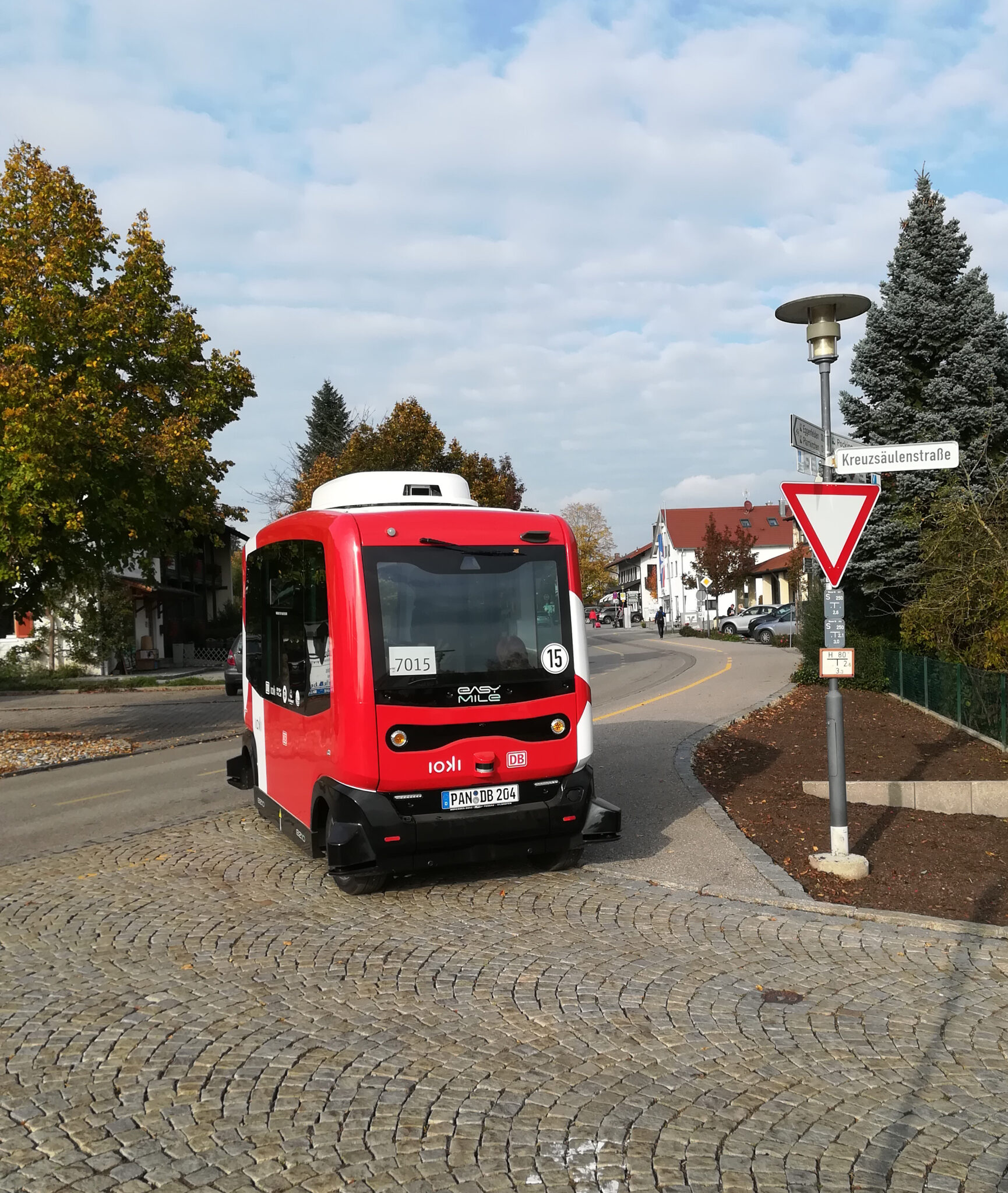Exploring the Future of Mobility
Fair Mobility and HEAL Project
On a sunny day in Bad Birnbach, the Fair Mobility project team had the pleasure of joining Roswitha Klingshirn on an insightful “Kennenlernen” tour in an autonomous vehicle from the HEAL project. This event was for us significant step towards understanding and experiencing the future of autonomous transportation.
On a sunny day in Bad Birnbach, the Fair Mobility project team had the pleasure of joining Roswitha Klingshirn on an insightful “Kennenlernen” tour in an autonomous vehicle from the HEAL project. This event was for us significant step towards understanding and experiencing the future of autonomous transportation.
A Glimpse into Autonomous Driving
During the tour, participants learned about the current limitations and potential of autonomous vehicles in Germany. Due to existing laws, vehicles cannot make independent decisions at intersections. However, with an operator’s assistance, the bus can navigate autonomously once the road is clear. This hybrid approach ensures safety while showcasing the capabilities of autonomous technology.

Autonomer Bus Bad Birnbach” by Reinhard Dietrich is licensed under CC BY-SA 4.0. To view a copy of this license, visit https://creativecommons.org/licenses/by-sa/4.0/?ref=openverse
Highlights
The tour included several stops at key locations in Bad Birnbach, each demonstrating the practical applications of autonomous vehicles:
1. Sternsteinhof: Known for its health and wellness facilities, including fasting programs to optimize digestion and metabolism.
2. Rosenhof: A rehabilitation clinic where the autonomous bus provides convenient transportation for patients and visitors.
3. Therapiebad: A therapeutic bath facility with barrier-free access, highlighting the inclusivity of autonomous transport.
Community Engagement and Accessibility
One of the standout features of the autonomous vehicle is its accessibility. Equipped with ramps, it accommodates passengers with mobility aids such as walkers and wheelchairs. This inclusivity ensures that everyone can benefit from the advancements in autonomous technology.
One of the standout features of the autonomous vehicle is its accessibility. Equipped with ramps, it accommodates passengers with mobility aids such as walkers and wheelchairs. This inclusivity ensures that everyone can benefit from the advancements in autonomous technology.
Critical Analysis and Future Prospects
While the tour showcased the potential of autonomous vehicles, it also highlighted several areas for improvement. The current legal framework in Germany restricts the full deployment of autonomous technology, requiring operator intervention at critical points. This limitation underscores the need for legislative changes to fully realize the benefits of autonomous driving.
Moreover, the speed and efficiency of the autonomous bus are areas that require enhancement. Currently, the bus operates at a modest speed, which, while safe, limits its practicality for longer routes. Increasing the operational speed could significantly improve the service’s appeal and functionality.
The tour also emphasized the importance of public acceptance and trust in autonomous technology. Many potential users are hesitant to embrace autonomous vehicles due to safety concerns and unfamiliarity with the technology. Continued public education and transparent communication about the safety measures and benefits of autonomous vehicles are crucial for broader acceptance.
Addressing Discrimination and Ensuring Fair Mobility
Innovations like autonomous vehicles have the potential to significantly enhance fair mobility by providing accessible and reliable transportation options for all, including those with disabilities, the elderly, and individuals in underserved areas. By reducing dependency on human drivers, these technologies can help mitigate issues related to driver availability and bias.
However, it is essential to critically analyze these innovations to ensure they do not inadvertently perpetuate or exacerbate existing inequalities. For instance, the deployment of autonomous vehicles must consider the digital divide, as access to technology and digital literacy varies across different socio-economic groups. Additionally, the design and implementation of these systems should be inclusive, taking into account the diverse needs of all users to prevent any form of discrimination.
